Key takeaways:
- Experimental music challenges traditional notions by transforming everyday sounds into innovative compositions, prompting listeners to rethink what constitutes music.
- Nightclub venues foster a creative atmosphere that enhances audience connection and encourages spontaneous collaborations among artists.
- The evolution of experimental music is shaped by various artistic movements and technological advancements, enabling unique genre-blending collaborations.
- Notable figures like John Cage and Laurie Anderson push the boundaries of music, emphasizing the profound emotional resonance of sound and silence.

Understanding experimental music
Experimental music can often feel like stepping into the unknown. I remember attending a live performance that started with complete silence, drawing each audience member into a collective breath. What was unfolding was an exploration of sound that challenged my traditional notions of music—those daring artists pushed boundaries that left me captivated and questioning what music truly meant.
One of the most striking elements of experimental music is its emphasis on innovation and exploration. I’ve encountered sounds created from everyday objects, like the gentle scraping of a chair or the clinking of glasses, transformed into strange yet beautiful compositions. It made me wonder: when does a sound become music? For me, this genre blurs the lines, inviting us to recognize that anything can be an instrument and every sound has potential.
Through my experiences, I’ve found that experimental music often evokes deep emotions, ranging from confusion to exhilaration. I recall a night spent immersed in a performance that felt like a journey through chaos and tranquility. How can something so unconventional resonate so deeply? It’s this raw exploration of human experience that makes experimental music a profound art form, inviting us to engage with our own feelings and thoughts in unexpected ways.
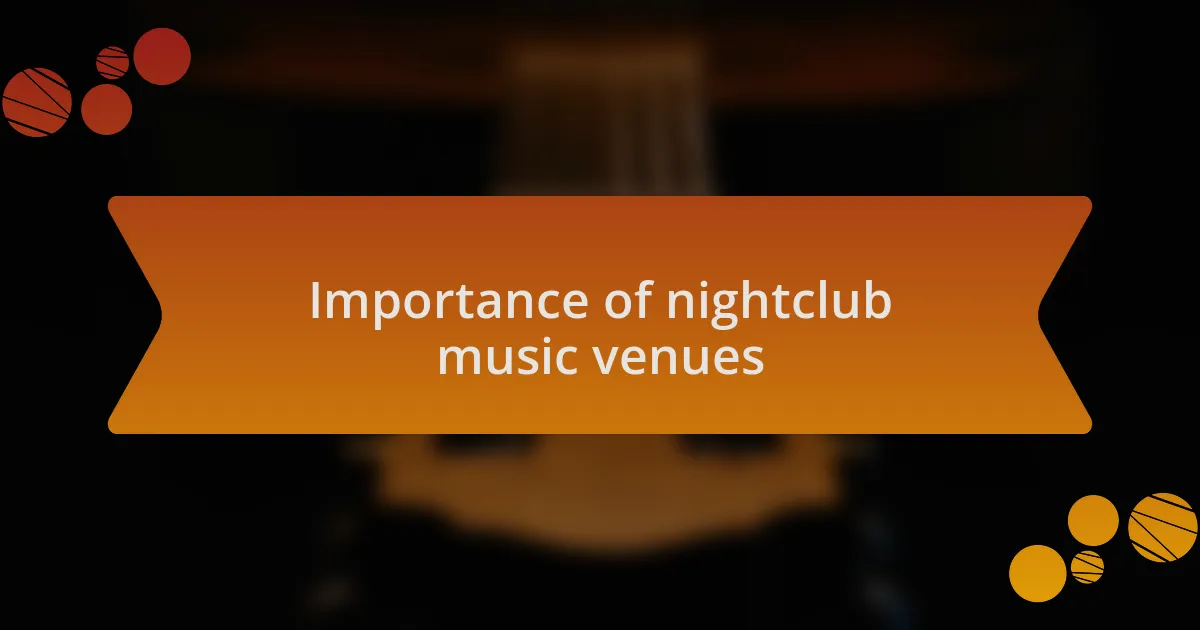
Importance of nightclub music venues
Nightclub music venues play a crucial role in shaping the experience of experimental music. Each time I walk into a venue, there’s a palpable energy that fuels creativity and connection. The dim lights, eclectic decor, and the buzz of conversation create a space where innovation thrives. Have you ever noticed how the ambiance contributes to the experience? It’s almost as if the venue invites artists to take risks and the audience to embrace the unexpected.
These spaces provide a platform for artists to showcase their work in an environment that encourages exploration. I recall a night at a small club where a local artist transformed the entire room with nothing but her voice and an array of effects pedals. It struck me how the right venue can amplify the essence of the performance, making it a shared journey between the performer and the audience. This immersive environment allows for a deeper emotional connection; the venue becomes a vessel for the music’s intent.
Moreover, nightclub venues are essential for fostering community and collaboration among artists. I’ve witnessed spontaneous collaborations where musicians from diverse backgrounds come together, creating something beautifully chaotic. It reminds me that these venues are not just places to hear music; they are cultural hubs where creativity knows no boundaries. How can we underestimate the power of these spaces in shaping the future of music? They provide nourishment for the artistic soul, making each visit a unique exploration in sound.
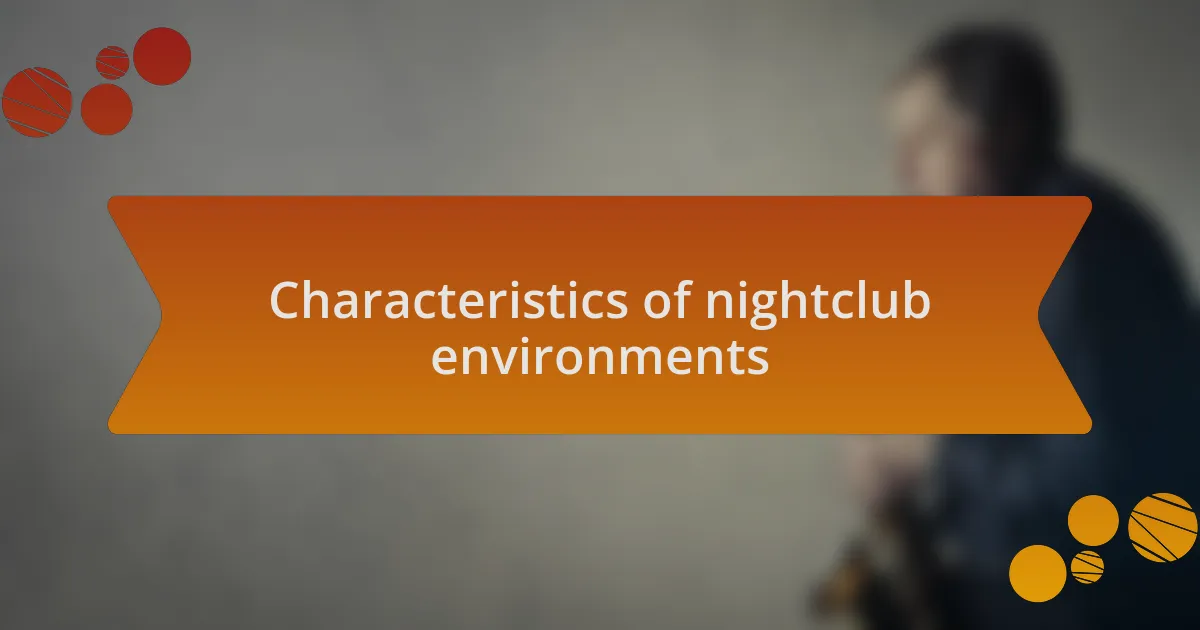
Characteristics of nightclub environments
Nightclub environments possess a unique atmosphere, combining both intimacy and excitement. The low lighting helps create an almost secretive vibe, where conversations feel more confessional. I remember a night at a warehouse party where the only illumination came from neon lights, and it felt as if the music was weaving a tapestry of shared stories among strangers. Isn’t it fascinating how such settings can make you feel both exuberant and connected to those around you?
The layout of a nightclub also significantly influences the overall experience. While some venues have expansive dance floors that encourage movement, others are designed for close encounters, facilitating deep connections. I think back to a small jazz club with an intimate stage barely a few feet away from the audience. This proximity allowed every note to linger in the air, making it impossible not to engage with the performance. How can such setups not inspire a more profound appreciation for the art being shared?
Furthermore, the diversity of sounds and styles in a nightclub can be a revelation. Each genre brings its own flair, drawing in a varied crowd that contributes to a vibrant melting pot of creativity. I’ve felt the energy shift dramatically when a DJ spins an unexpected track, igniting the crowd with a collective sense of discovery. In those moments, I realize how vital it is for these environments to remain welcoming to all forms of musical expression; isn’t it amazing how one song can unite a room full of individuals into a singular experience?
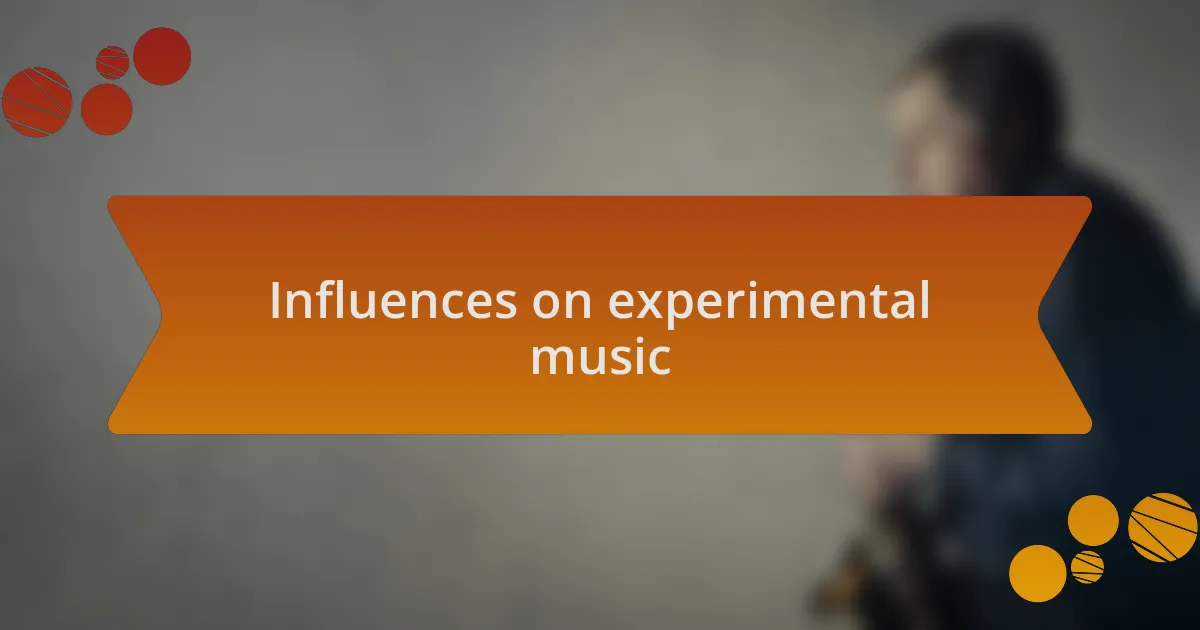
Influences on experimental music
The evolution of experimental music is deeply intertwined with various artistic movements and cultural shifts. From the avant-garde influences of the 20th century to the emergence of electronic music, each phase has introduced unique elements that challenge traditional structures. I remember attending an art installation where the sounds seemed to meld with the visuals, creating an immersive experience that expanded my perception of what music could be. How can we not be inspired when art forms complement and push each other into new territories?
Technology plays an essential role in shaping experimental music. Innovations like loop stations and synthesizers open endless possibilities, allowing artists to manipulate sound in groundbreaking ways. I once saw a live act that utilized vintage tape machines in a way that was both nostalgic and innovative; it was a mesmerizing blend of the past and future. Isn’t it incredible how the tools available at our fingertips can redefine creativity?
Collaboration across genres has also fueled the growth of experimental music. Artists from various backgrounds come together to create something entirely new, often defying categorization. I recall a night when a metal guitarist joined forces with a classical violinist, and the outcome was an unexpected harmony that sparked my curiosity. What does it say about the power of music when boundaries dissolve to create something that resonates with so many?
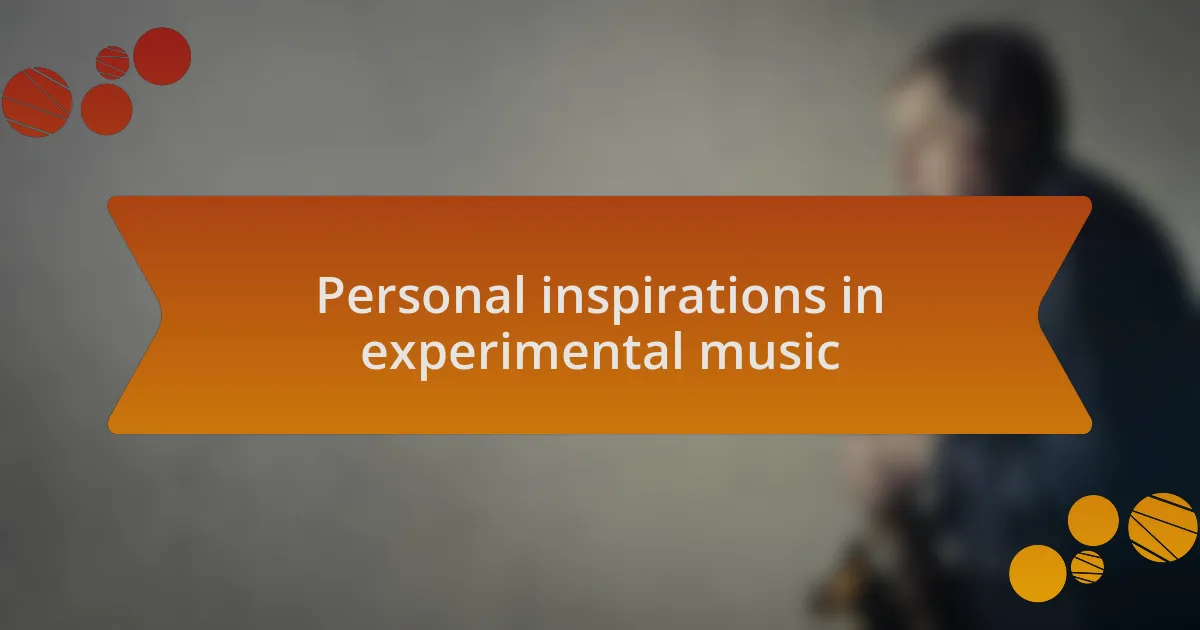
Personal inspirations in experimental music
There are moments in experimental music that hit me on a personal level, often stemming from unexpected encounters. I once stumbled into a performance in a small Brooklyn venue where a sound artist used found objects as instruments. The raw, unfiltered noise resonated with me, reminding me of childhood playfulness and the beauty of improvisation. Isn’t it fascinating how something as simple as a kitchen spoon can evoke profound emotional responses?
Traveling has significantly influenced my understanding of sound. During a trip to Japan, I experienced an avant-garde sound installation in an abandoned train station, where nature’s sounds intertwined with electronic dubs. It struck me how environment shapes music; the architecture and ambiance created a dialogue between the venue and the sounds. It makes me wonder—how much do the places we visit sculpt our musical identities?
Listening to the stories and experiences of artists has profoundly inspired my appreciation for experimental music. At a recent workshop, an artist shared their journey of using sound to process grief, creating waves of emotion that deeply resonated with the audience. This connection between personal narrative and sound underscores the transformative power of music. Could it be that our own stories are where true innovation begins?
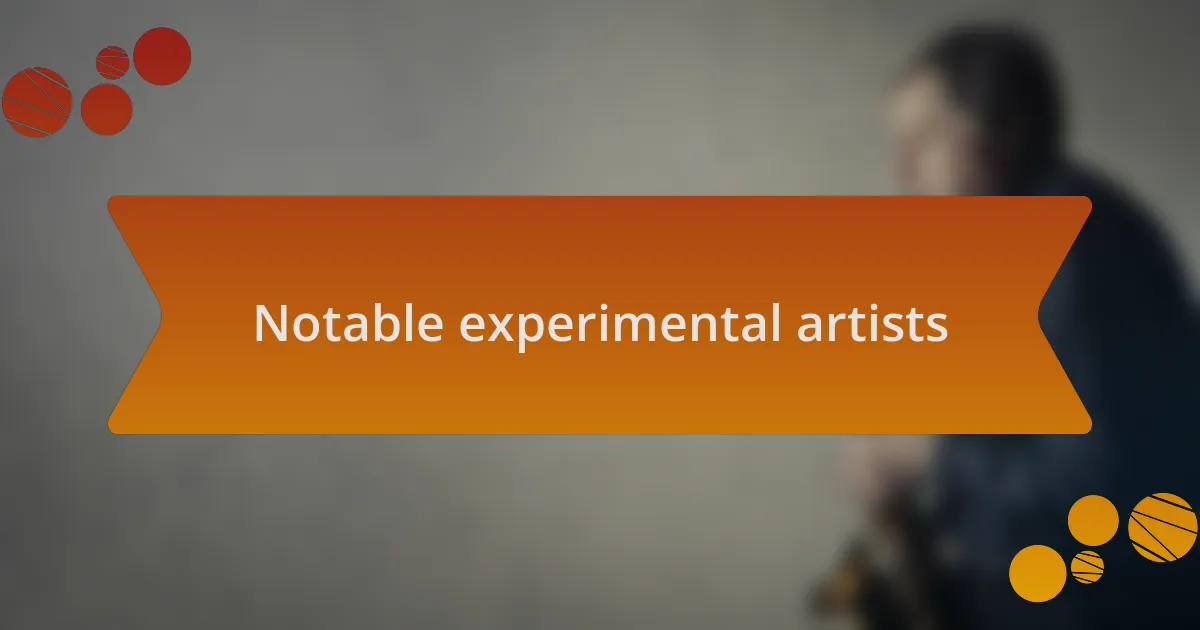
Notable experimental artists
One of the standout figures in experimental music is John Cage, whose work has profoundly influenced countless artists, including myself. I vividly recall the first time I listened to “4’33””, a piece where musicians remain silent for four minutes and thirty-three seconds. It forced me to reconsider what music could be and made me realize that silence itself can be a powerful statement. Isn’t it fascinating how the absence of sound can evoke such deep contemplation?
Another artist that captivates me is Laurie Anderson, known for her unconventional approach and multimedia performances. I once attended a show where she blended spoken word, visual art, and electronic soundscapes. The experience was surreal, and it felt as if I had stepped into an entirely different world. How often do we allow ourselves to be completely absorbed by the creativity unfolding before our eyes?
Lastly, I can’t overlook the impact of Autechre, a duo whose complex rhythms and textures challenge traditional music constructs. When I first encountered their album “Amber” during a late-night listening session, I was struck by the intricate layers and the way they can transport you to another realm. Their willingness to push boundaries is a potent reminder that experimental music often lies in the courage to explore the unknown. How can we not be inspired by their fearless approach to sound?